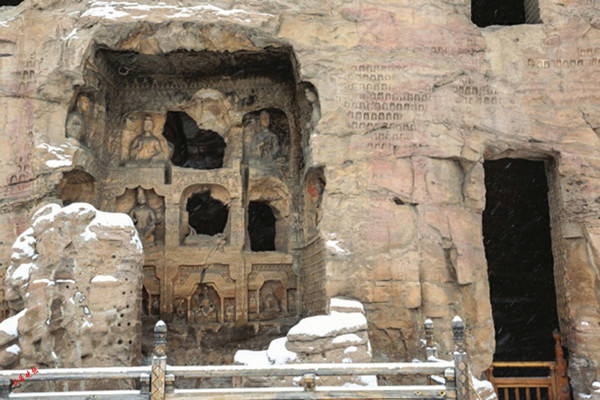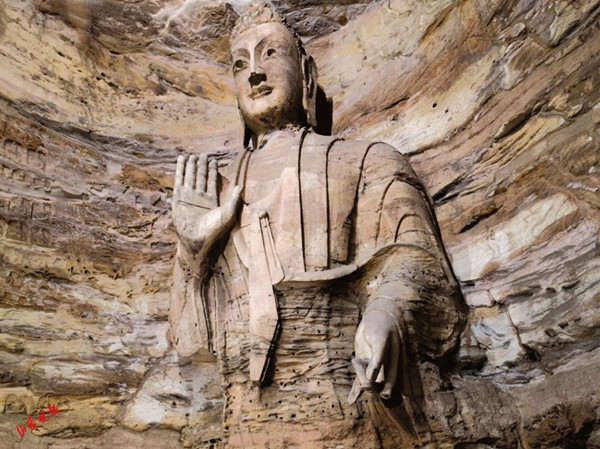Internet giant Tencent backs Yungang Grottoes protection

The extraordinary exterior of Cave No 16 of the Yungang Grottoes in Datong city [Photo/Shanxi Evening News]
A special digital protection project for Cave No 16 of the Yungang Grottoes – located in Datong city, North China's Shanxi province – was recently included into Chinese internet giant Tencent's public welfare projects.
This was under this year's "99 giving day" campaign, which was launched by Tencent to use digital technology for philanthropic purposes.
More than 200 statues in Cave No 16-1 of the Yungang Grottoes are believed to have been lost overseas. Researchers plan to let people view a more complete Cave No 16-1 through augmented reality (AR) technology, through the special digital protection project.
Under the "99 giving day" campaign, people can take part in the digital protection project by playing games. Tencent Games has developed built-in quizzes in 20 popular games and e-sports events, allowing gamers to get credits by doing the quizzes and donating their credits to the project – in so doing raising the public attention to the digital restoration and display of Cave No 16.
Meanwhile, Tencent Games will apply cutting-edge technology to the digital restoration of more nationally vital cave temples.

A supremely serene Buddhist statue in Cave No 16 of the Yungang Grottoes in Datong city [Photo/Shanxi Evening News]
It's the positive results of the digitization of Yungang Grottoes, which has opened up a new chapter in its protection, inheritance and utilization of domestic cultural heritage.
The digital protection of cultural relics is designed to use digital technology to record all the existing information of cultural relics, including shapes and colors, at a high resolution.
Based on 8K image resolution, 0.03 mm point cloud accuracy and color reproduction accuracy of 95 percent or more, the data from the Yungang Grottoes is recorded, deconstructed, analyzed and reorganized to carry out virtual restoration and reproduction, as well as used for in-depth development of digital resources.
Digital technology is applied to surveying, mapping and scanning in caves, leaving behind data, comprehensively collecting and sorting out historical records, archive materials and research results, to form a text and image database.
According to Ning Bo, head of the digitization department of the Yungang Research Institute, the institute has basically completed data collection of one third of the Yungang Grottoes and made successful attempts in the formation of cultural relic data models and data derivatives since it started digital protection in 2003.
Ning said the years of effort had provided the Yungang Grottoes with unlimited development possibilities.
It has helped archaeologists to sort out a series of more specific data images: now all cave Buddha statues or architectural framework structures can be presented on the computer.
In terms of cultural heritage protection, targeted research and repairs can be carried out based on the marked damaged sites of each cave due to collected and sorted data.
Virtual reality and AR technologies are used to showcase the Yungang Grottoes online on the tourist attraction's official website and WeChat account, which is better than ordinary modeling in demonstration effects.
In the future, the digital development will extend to the security, technical defenses, or the tourist services of the Yungang Grottoes scenic area.
